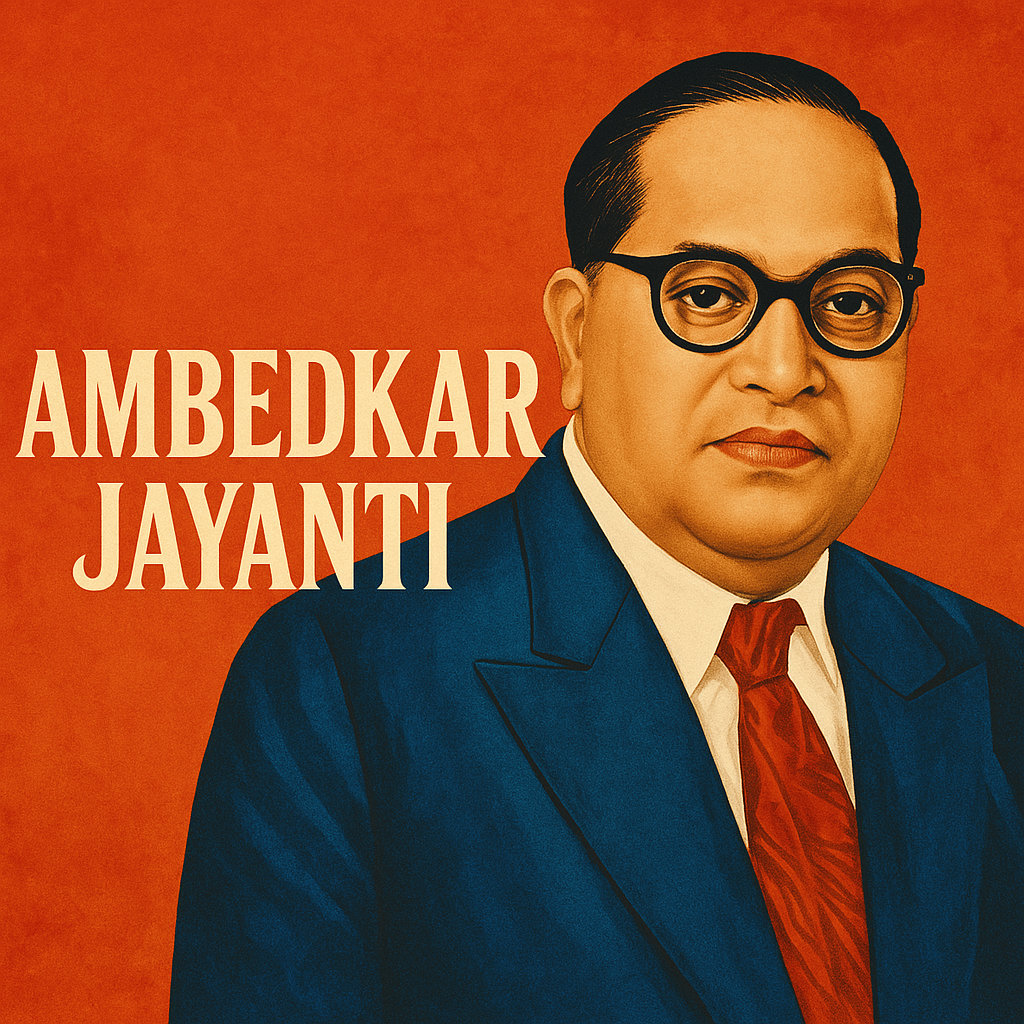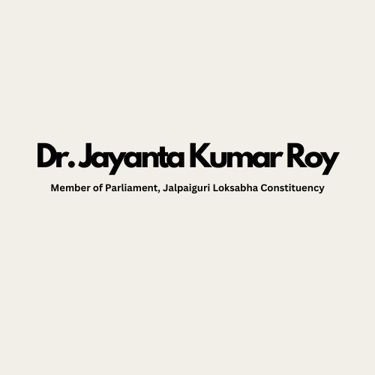Restoring Justice: How the BJP Revived Dr. B.R. Ambedkar’s Legacy after Congress’s Neglect
Restoring Justice: How the BJP Revived Dr. B.R. Ambedkar’s Legacy after Congress’s Neglect
Dr. Jayanta Kumar Roy
4/14/20255 min read


Dr. Bhimrao Ramji Ambedkar, the chief architect of the Indian Constitution, stands as one of modern India’s most influential thinkers and social reformers. His life’s mission—to eradicate caste oppression and secure justice and dignity for the marginalized—continues to inspire millions. However, an honest look at post-independence history reveals a disturbing reality: while Dr. Ambedkar laid the foundational principles of our Republic, the Congress party systematically sidelined his contributions, undermined his politics, and suppressed his ideological legacy. In stark contrast, the Bharatiya Janata Party (BJP), especially under former Prime Minister Sri Atal Bihari Vajpayee Ji and Prime Minister Narendra Modi, has made remarkable efforts to honor, institutionalize, and globalize Ambedkar’s vision.
I. Congress’s Historical Neglect and Suppression of Dr. Ambedkar
1. Political Sabotage and Marginalization
Ambedkar’s early engagement with Indian politics was marked by deep disillusionment with the Congress. As early as the 1930s, Congress leaders resisted his demand for separate electorates for Dalits. The 1932 Poona Pact, signed under pressure from Mahatma Gandhi’s fast, replaced separate electorates with reserved seats—effectively curtailing Ambedkar’s vision for independent Dalit political voice.
Despite drafting the Constitution, Ambedkar was given little respect in Nehru’s cabinet. He was appointed Law Minister but not trusted with any significant role in social policy. In the 1952 general elections, the Congress fielded a candidate against him in Bombay (SC) and ensured his defeat. In the 1954 Bhandara by-election, Ambedkar lost again, facing Congress-backed opposition. These were not coincidences—they reflect a pattern of political isolation inflicted on Ambedkar by the Congress party.
2. Delayed Recognition and Exclusion from National Memory
Dr. Ambedkar passed away in 1956. Yet it took 34 years for the Indian state—then under a government supported by the BJP—to confer on him the Bharat Ratna in 1990. From 1956 to 1990, there was no serious national effort by the Congress to honor or institutionalize his legacy. His works were kept out of academic syllabi, and no effort was made to build national memorials, publish his writings, or propagate his ideas. The Congress’s tokenism—installing statues while ignoring substance—was evident for decades.
Even Ambedkar’s historic embrace of Buddhism in 1956, a mass socio-religious rejection of caste oppression, received no official acknowledgment from Congress governments. No national observance, no curriculum inclusion, no cultural recognition.
3. Intellectual Suppression
Ambedkar’s scathing critiques of caste, his economic philosophies, and his calls for an industrialized, modern India found little reflection in Congress-era policymaking. Works like Annihilation of Caste, the Problem of the Rupee, and Riddles in Hinduism were never introduced into public discourse by the Congress. Instead, he was reduced to a ceremonial figure while his revolutionary ideas were systematically ignored.
II. BJP’s Comprehensive Restoration of Ambedkar’s Legacy
In contrast to the decades of neglect under Congress, the BJP has taken a multidimensional approach to honor and institutionalize Dr. Ambedkar’s vision—through policy, education, international outreach, infrastructure, and economic empowerment.
1. Panchteerth: National Memorials to a Global Icon
The Modi government conceptualized the "Panchteerth" to commemorate the five most significant locations associated with Dr. Ambedkar’s life and work. These sites were not only identified but also developed into national and international memorials to ensure that future generations understand the depth of his contributions.
Janmabhoomi – Mhow, Madhya Pradesh: This is the birthplace of Dr. Ambedkar, where he was born on April 14, 1891. The government has developed a grand memorial here that includes a museum showcasing his early life, a library, and an auditorium to hold seminars and lectures on social justice.
Shikshabhoomi – London, United Kingdom: Dr. Ambedkar studied at the London School of Economics and lived at 10, King Henry’s Road. In 2015, the Modi government purchased and restored this house and turned it into an international memorial and research center to highlight his academic achievements and global vision.
Deekshabhoomi – Nagpur, Maharashtra: This is where Dr. Ambedkar embraced Buddhism on October 14, 1956, along with millions of his followers. The Deekshabhoomi site is now a pilgrimage place for Buddhists and social reformers, and the government has helped fund its expansion and upkeep as a national monument.
Mahaparinirvan Bhoomi – Delhi: Dr. Ambedkar passed away in Delhi on December 6, 1956. His cremation site at 26, Alipur Road has been transformed into a national memorial—Mahaparinirvan Sthal—with landscaped gardens and an Ambedkar museum that displays important documents, speeches, and writings.
Chaityabhoomi – Mumbai, Maharashtra: This is the site where Dr. Ambedkar's ashes were immersed. The place has become a spiritual and cultural hub for millions of followers who visit annually. The BJP government has supported its development into a site of reverence with upgraded infrastructure, amenities, and educational installations.
Each of these five sites has been elevated into an educational and inspirational landmark, embodying Ambedkar’s fight against inequality and his pursuit of knowledge, justice, and human dignity.
2. Ambedkar Jayanti as a National and Global Commemoration
Unlike the Congress era, where Ambedkar Jayanti was limited to symbolic observances, the BJP transformed April 14 into a national celebration. Ministries and schools conduct events, the Parliament pays tribute, and Indian embassies across the world observe the day. The Modi government even proposed recognizing Ambedkar’s contributions at the United Nations level.
3. Social Justice through Welfare:
The BJP has launched numerous schemes bearing Ambedkar’s name that reflect his commitment to education, economic upliftment, and dignity:
· Dr. Ambedkar Post-Matric Scholarship for Economically Backward Classes (EBCs);
· Dr. Ambedkar Pre-Matric Scholarship for SC Students;
· Dr. Ambedkar Medical Aid Scheme;
· Stand-Up India and Mudra Yojana to promote SC/ST entrepreneurship;
· PM Awas Yojana focusing on Dalit beneficiaries.
These are not cosmetic efforts—they embody Ambedkar’s belief in state-driven affirmative action and inclusive development.
4. Legal and Institutional Innovations
The Modi government institutionalized November 26 as Constitution Day, commemorating the adoption of the Constitution and honoring Ambedkar’s leadership. The Dr. Ambedkar International Centre in Delhi serves as a think tank and research institute. His works have been digitized and translated into regional languages for accessibility.
The BJP also strengthened the National Commission for Scheduled Castes, supported Eklavya Schools for tribal children, and expanded reservations for educational institutions under constitutional amendments.
5. Dalit Political and Social Empowerment
The elevation of Ram Nath Kovind, a Dalit, to the highest constitutional office as President of India in 2017 is a symbolic and substantive shift. The BJP has empowered Dalit leaders across the country, giving them organizational responsibilities and political prominence.
Programs like Ambedkar Samman Abhiyan, Samvidhan Gaurav Yatra, and Sabka Saath, Sabka Vikas integrate Ambedkar’s inclusive vision with BJP’s development agenda.
III. Ideological Convergence: BJP and Ambedkar’s Reformist Nationalism
Dr. Ambedkar believed in nationalism rooted in equality, constitutional morality, and economic justice. He was a fierce critic of appeasement politics and communal concessions—principles that align with BJP’s ideological stance. Ambedkar’s conversion to Buddhism, often portrayed by Congress as anti-Hindu, is understood by BJP as a reformist act within the Indic civilizational framework.
On economic policy, Ambedkar favored industrialization, fiscal prudence, and land reforms. BJP’s emphasis on infrastructure, self-reliance (Atmanirbhar Bharat), and startup incentives reflect these ideas. Ambedkar also emphasized education as liberation—a goal pursued through NEP 2020 and expansion of access to higher education for SC/ST students.
IV. A Legacy Reclaimed
For decades, the Congress party invoked Ambedkar’s name while rejecting his principles. It garlanded his statues but ignored his calls for structural reform. It installed his image in Parliament but did not let his ideas enter the classroom.
By contrast, the BJP’s approach is comprehensive, respectful, and grounded in national development. The Modi government has gone beyond optics to transform Ambedkar from a ceremonial Dalit icon into a global Indian visionary whose ideas animate the constitutional and cultural ethos of 21st-century India.
Dr. Ambedkar once said, “Ours is a battle not for wealth, nor for power. It is a battle for freedom. It is a battle for the reclamation of the human personality.”
In that battle, the Congress faltered—it marginalized the man and diluted the message. The BJP, however, has recognized Ambedkar not merely as a Dalit leader but as a national sage whose vision is crucial to India’s future. By restoring Ambedkar’s rightful place in our institutions, policies, and national memory, the BJP has corrected a grave historical wrong and reclaimed a legacy that belongs to all of India.
